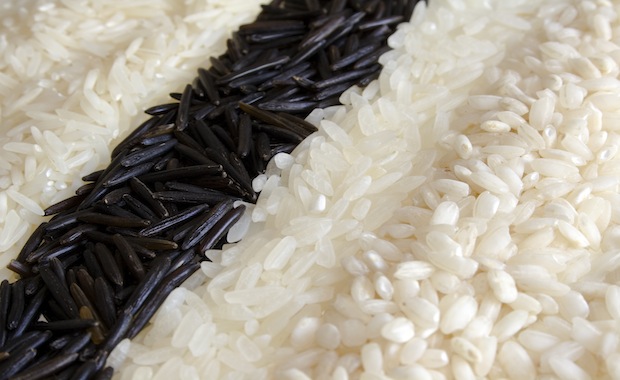On Arsenic
Since the FDA released their first analytical results of arsenic in ricemid-September, I have received a multitude of questions, even from my mother! And when my mom asks, I answer.
What is it?
Arsenic is a compound found naturally in rocks, soil, water and air. Thanks to agriculture and industry—that has been happily using arsenic since the 1950’s—it is released into the environment whether we like it or not (let’s call this unnatural). Arsenic has no taste or smell and is typically part of other chemical compounds that are divided into two groups:
Inorganic compounds (combined with oxygen, iron, chlorine, and sulfur) Inorganic arsenic compounds are typically found in industry. This is the form of arsenic that tends to be more toxic and has been linked to cancer, developmental delays and brain damage.
Organic compounds (combined with carbon and other atoms) Organic arsenic compounds are much less toxic than the inorganic arsenic compounds and are” not thought to be” linked to cancer however chronic exposure is concerning.
What the Heck is Arsenic Doing in our Food?
In the 1950’s, arsenic was added to wood, commonly used to build decks and playgrounds throughout our nation, to ward off insects, bacteria and fungi. Shortly thereafter, arsenic began rearing its toxic head in various agricultural pesticides and herbicides. Hey, if it worked on wood, why not try it on our food? Don’t you just love industry’s logic! An “appreciation” for its toxicity (like causing brain damage in those who worked with it) led to the use of the less toxic form. Arsenic, in this less toxic form, is still being used today by industry despite efforts to standardize or even eliminate it’s use.
Where is it?
While arsenic is found naturally in rocks, soil, water and air, the highly toxic arsenic that was once used in pesticides and herbicides (and sprayed on apple orchards among other tree fruit farms), to this day, still contaminate our soil—thus, the high level of arsenic detected in apple juice (and grape juice).
As far as rice is concerned, it happens to be the one crop that takes up arsenic from soil and water more readily than other grains.
On poultry, since 1995, chicken growers (factory farms that is) have used arsenic in animal food for disease prevention (remember it wards off bacteria) and as a growth stimulant (and it also makes the flesh an “appetizing” shade of pink). However, in 2009, The Poison-Free Poultry Act proposed to ban the use in industrial poultry (and swine) production in response to studies showing elevated levels or arsenic in treated chickens. Hey folks, looks like The Poison Free Poultry Act has not acted cause it’s still in our chickens!
P.S. And, fish and shellfish can have high levels of the less toxic arsenic as well as many other foods due to environmental contamination.
What can we do about it?
Sadly, buying organic doesn’t necessarily make a difference—arsenic is everywhere and is absorbed by plants despite growing conditions. While the FDA has been testing for total arsenic (measured as organic plus inorganic) and other contaminants since 1991 through its Total Diet Study and the Environmental Protection Agency set arsenic standards for our drinking waterat 10 parts per billion, there are NO standards for our food. And something needs to be done about this. To learn more, a must read is Consumer Reports Arsenic in Your Food. Before I offer an easy take-away, I am going to plead with you to take action and request that:
- The EPA phase out use of pesticides containing arsenic
- The USDA and the EPA end the use of arsenic-laden manure as fertilizer
- The FDA ban the feeding of arsenic-containing drugs and animal byproducts to animals
Thus, for the moment limit your intake of foods known to have higher levels of arsenic and consume a wide variety of foods. Never forget that toxicities are rampant in our environment (not just arsenic). We will never totally eliminate exposure, so we must do the best we can. So, in practical terms:
- Have rice or rice containing products a few times a week versus daily
- Avoid regular consumption of apple juice (in fact, limiting juice intake overall is a good rule of thumb as juice has a lot of sugar and little nutritional value unless fresh pressed/squeezed)
- And check out what Dr. Mehmet Oz has to say…I like it!

